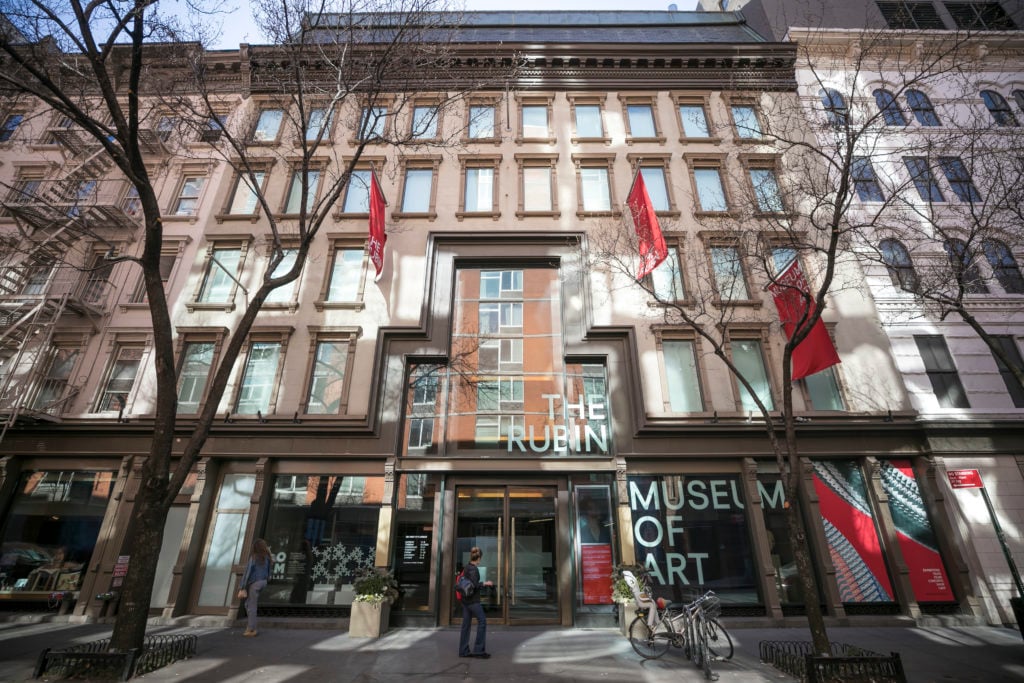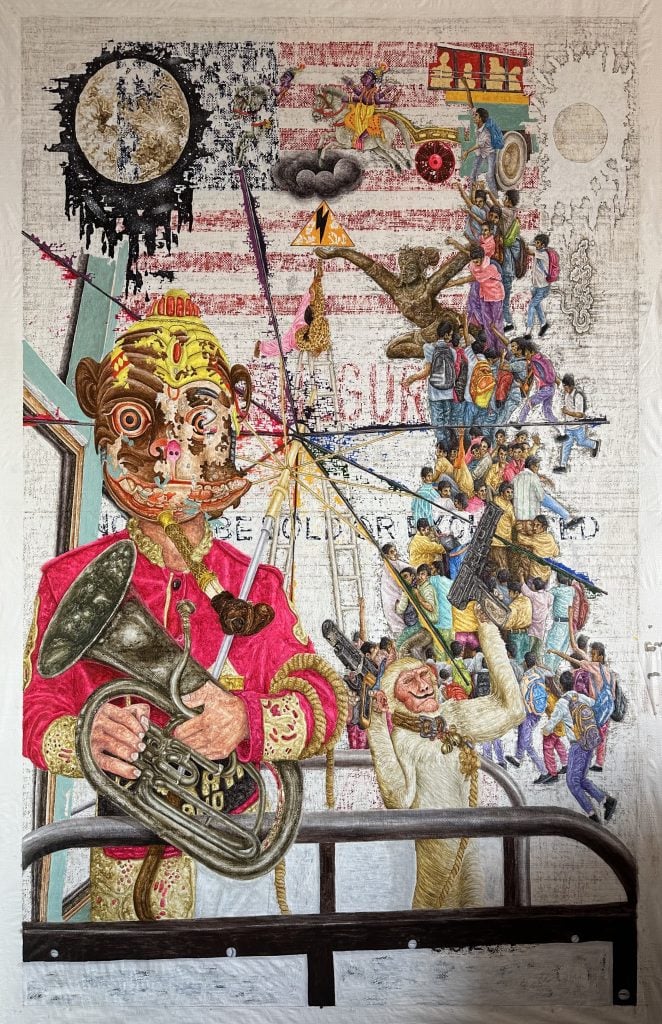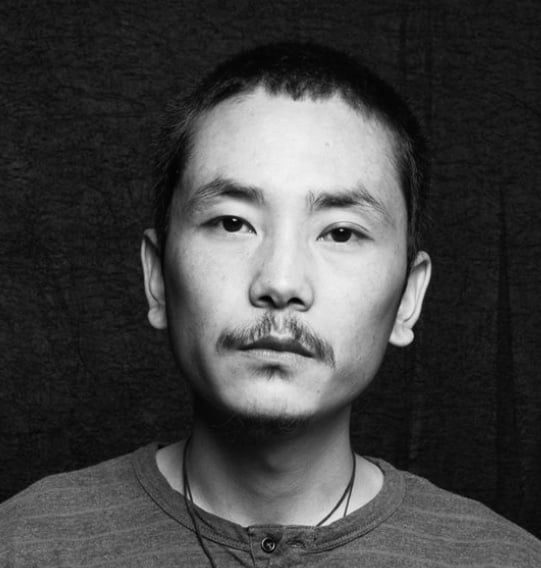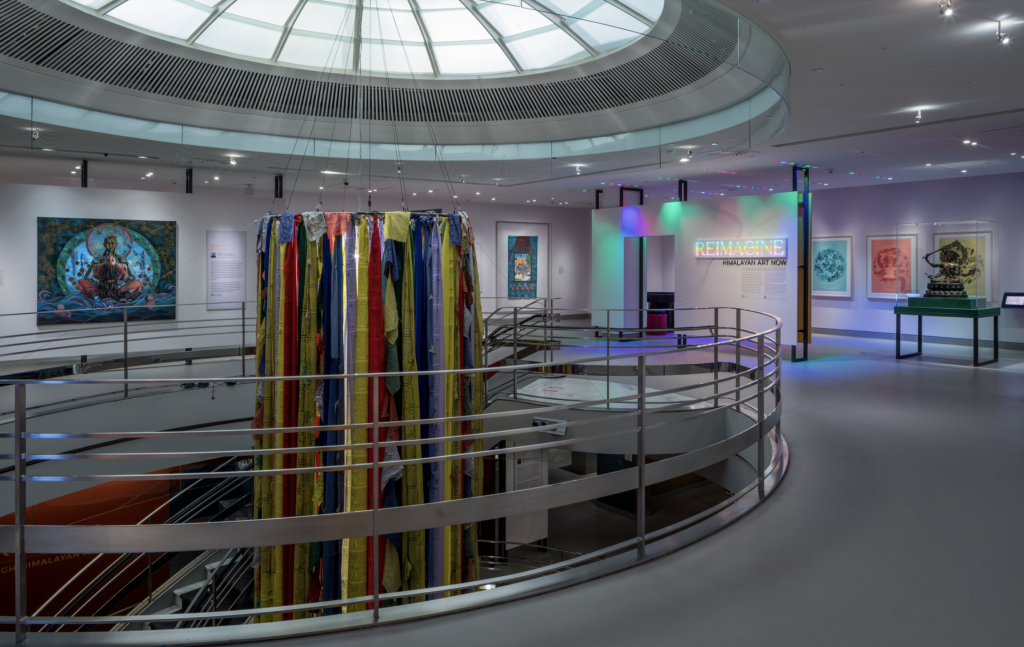Museums & Institutions
Rubin Museum’s New Art Prize Shines a Light on Contemporary Himalayan Artists
The award, along with the Rubin's first cycle of artist grants, marks its latest endeavor as a decentralized institution.

Just weeks before its physical space in Chelsea shutters, New York’s Rubin Museum of Art has revealed that Tibetan artist Tenzin Gyurmey Dorjee has won its new Rubin Himalayan Art Prize—an unrestricted $30,000 grant that is now the largest source of direct financial support available to contemporary Himalayan artists working in the region and beyond. The prize, which arrives alongside the Rubin’s first cycle of artist and research grants, marks its latest endeavor as a decentralized institution.

Tenzin Gyurmey Dorjee, Chants of a Monkey Mind (2023). Courtesy of the artist.
“We have been living our future model already, by having exhibitions on the road, by having collaborations globally,” Rubin director Jorrit Britschgi told me regarding the museum’s work since announcing its new model in January.
While the Rubin Art Prize and grants aren’t its first projects as a decentralized institution, “they are an important leg of the direction that we are moving as an organization,” Britschgi explained. Two years ago, his team began researching grants geared towards Himalayan artists while formulating its new prize, drawing particular inspiration from the U.K.-based Victoria and Albert Museum’s Jameel Prize around Islamic art, “which also looks at how contemporary artistic expressions can be put in dialogue with collections,” Britschgi said.
“It really is the power of contemporary artists,” he said, “to create ways into traditional collections and objects, and extract layers of meanings that may be hidden for us, even as an organization.”

Rubin Museum Executive Director Jorrit Britschgi at the opening of the Mandala Lab, London on September 16, 2023. Photo by Ali Smith. Courtesy of the Rubin Museum of Art.
A jury of Rubin staff and other experts evaluated the 32 contemporary artists in their current show, “Reimagine: Himalayan Art Now,” to select the inaugural winner. Dorjee, a promising 37-year-old artist and second generation Tibetan refugee based in India, paints colorful scenes inspired by family photo archives, internet imagery, and traditional Tibetan-style thangka painting alike atop tarp barley sacks that embody the tensions between displaced Tibetans and America.
“This material bears testament to the way the Tibetan diaspora has planted themselves in a new culture, and undergone changes in their own culture,” Dorjee’s artist statement said. “Through these works, I examine and celebrate the space we have created for ourselves as Tibetans in India.” Moving forward, the evolving annual Rubin Art Prize will choose artists from submissions.

Tenzin Gyurmey Dorjee. Courtesy of the artist.
The Rubin is also awarding an accompanying $200,000 in grants to 17 art and research projects that a separate panel of experts selected from nearly 150 proposals. While the Rubin has pioneered scholarship on ancient Himalayan art across efforts like its ambitious Project Himalayan Art throughout its 20 years as a brick and mortar museum, the projects in this first cycle of grant awardees take a contemporary approach to age-old subjects.
Among the awardees, Britschgi is most excited about professor and author Karl Ryavec’s joint “Rubin x Research” project with architect Tenzin Nyandak titled “Tibet From Above: Unveiling Buddhist Monasteries Through Spy Plane Images.” Here, the duo will produce an exhibition, publication, and a digital database examining Buddhist and Bonpo monasteries destroyed during the Tibetan Cultural Revolution through recently declassified aerial imagery.
Timely issues reappear throughout these grants. Britschgi cited filmmaker, writer, and designer Avi Kabir’s “Rubin x Art” project “Entangled Lives.” Kabir’s forthcoming documentary will explore how isolated villages in the Eastern Himalayas are adapting to intensifying monsoon seasons with living root bridges. Elsewhere, professor and author Shangrila Joshi has also received funding for a “Rubin x Research” project to probe how similarly climate-vulnerable communities in the region are celebrating a millennia-old festival for Machchhindranath, a deity believed to bring monsoon rains and bountiful harvests as well as protection against weather-related events.

Reimagine, installation view Courtesy of the Rubin Museum of Art.
Initiatives like the Rubin’s globetrotting Mandala Lab may make it look like they’re moving past the ancient, sometimes contested Himalayan holdings that initially anchored their institution. But, much like the Rubin’s decentralized structure aims to bring its collection to new audiences, the museum’s growing focus on championing contemporary Himalayan artists takes the emphasis off such fraught relics—and renders their historic holdings freshly legible for the new generation of audiences they will reach.
As the Rubin plays with what a contemporary art museum looks like, it wants to empower living Himalayan artist to lead the game.





